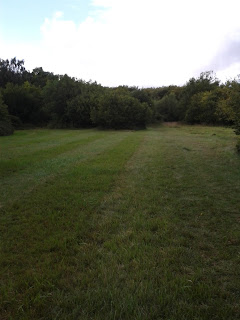This followed on from a good yomp up to the Clarendon estate last Sunday, up to the see the ruins of the royal hunting lodge (see previous posts), and of course, the llamas! The position of the ruins, high on top of a chalk ridge, with excellent vistas all around, as well as the unusual accompaniment of the llamas, makes it a very atmospheric spot that few experience.
Then, with a week of Christmassy events - both work and social- our team Christmas meeting involved a trip out to the edge of the New Forest, near Breamore. At Castle Hill, we parked on a ridge overlooking the wide expanse of the River Avon floodplain. The silvery ribbon of the river snaked in wide meanders across the valley, with the colours really popping in the dull winter light. After a bit of a chat about agricultural improvement and runoff of nutrients into the river, causing water pollution, we headed off into the Forest for a very muddy potter amongst the plantation forest. A welcome respite from the mince pies and meetings!
And I've just got back from another good stroll at Martin Down - with all this rain, it's becoming quite limited in finding locations with suitable ground conditions to avoid slipping and sliding around. The sun was shining, but apart from that and some sheep, it was uneventful - not even one bird.
Of course, it's going to be full-on-festivities in the next couple of weeks (I'm lucky enough not to have to work between Christmas and the New Year), so I will be a little quiet on here until probably my birthday weekend. Let's hope that winter gets a little more forceful, as my garlic is already a foot high and will probably need harvesting at this rate! Merry Christmas everyone!







